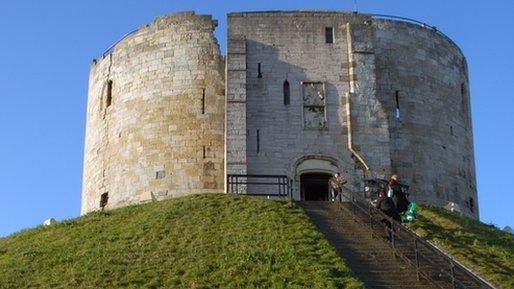Clifford's Tower 'toilet block' visitor centre approved
- Published
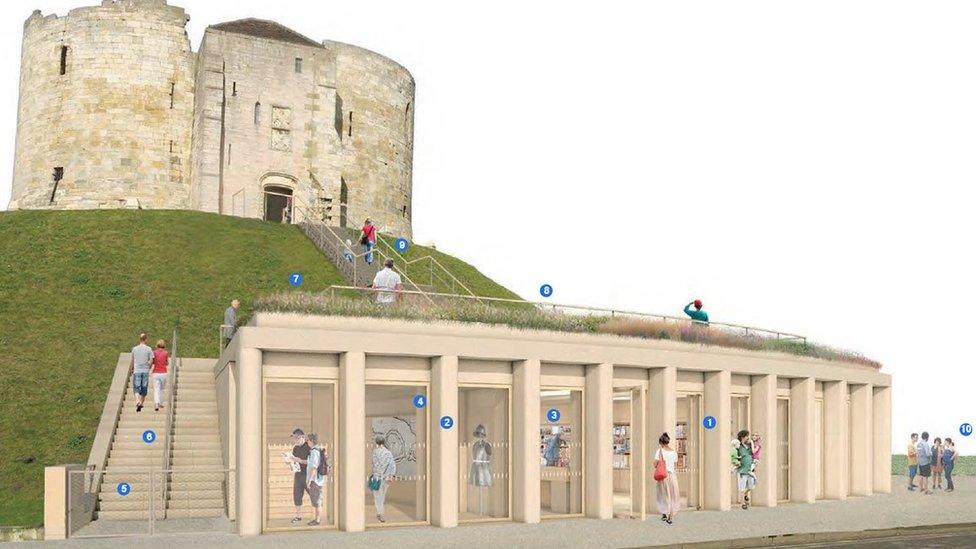
The centre will be used for ticketing and for informing visitors about the history of the 13th century building
Plans to create a new £2m visitor centre criticised for resembling a toilet block have been given the green light.
English Heritage want to build the centre adjacent to 13th Century Clifford's Tower in York.
The organisation said the project would enhance access to the site and work would begin in November.
One councillor described the plans as "an act of vandalism" but the majority voted in favour of the proposals.
Read more about this and other stories from across York and North Yorkshire
Objectors claimed building the centre into the base of the tower's mound would destroy the view and have a detrimental effect on the appearance of the area.
Ward councillor Johnny Hayes had urged the planning committee to reject the plans.
"It reminds me of a toilet block but it is not the building at issue, it is the position at the base of the mound that people are objecting to," he said.
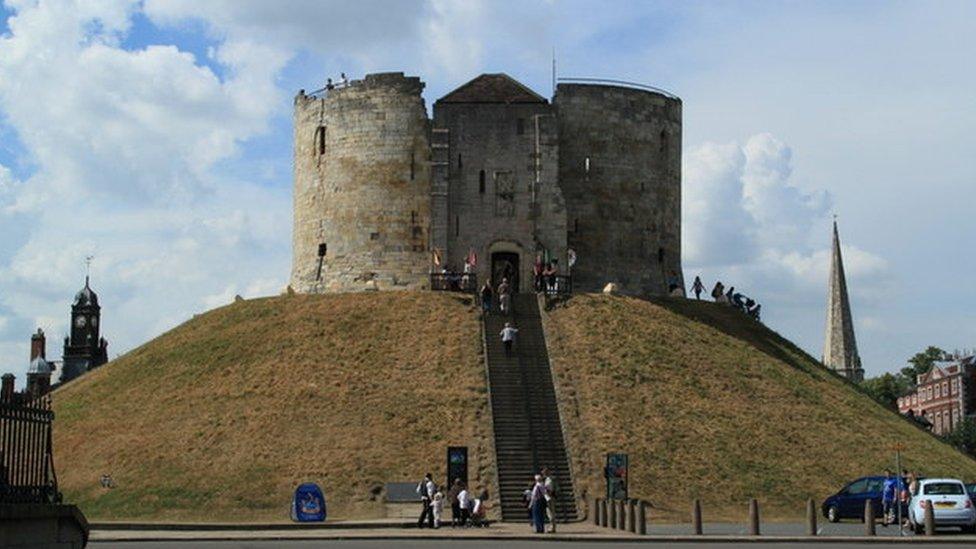
The bulk of concerns about the scheme relate to the construction of the centre at the base of the mound
Council officers said the proposed work, which includes new viewing platforms within the tower itself, would have the potential to "greatly enhance" the visitor experience.
Councillor John Galvin said: "Historically it is an iconic building but there is nothing there to tell you about it.
"People demand and expect to have decent interpretation of historic buildings."
Dr Jeremy Ashbee, head properties curator at English Heritage, said: "An enormous amount of care was taken in preparing the planning application, in consultation with planners, designers and members of the public.
"We are thrilled to have permission to go-ahead with this project."

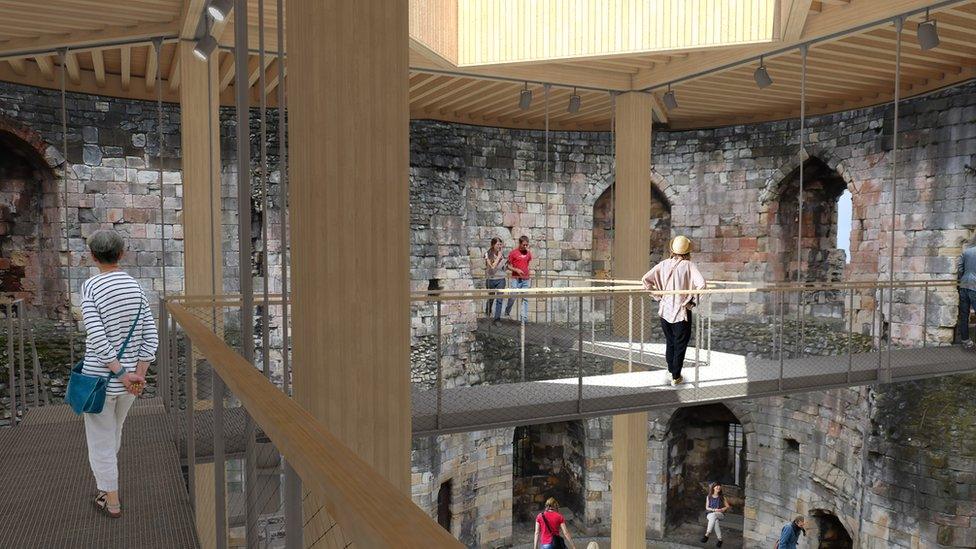
Clifford's Tower
The stone tower was built in the 1250s replacing an earlier wooden structure
It sits on top of a castle mound created by William the Conqueror in 1068
It was the site of a major attack on the city's Jewish community in 1190
The stone tower was reduced to a shell by a fire in the 1680s
It is the only remaining structure of the city's castle. Most of the buildings were destroyed in the 18th and 19th Centuries when the city's court and prison were built
The tower was surrounded by the Victorian prison until the 1920s
Source: English Heritage

- Published18 January 2016
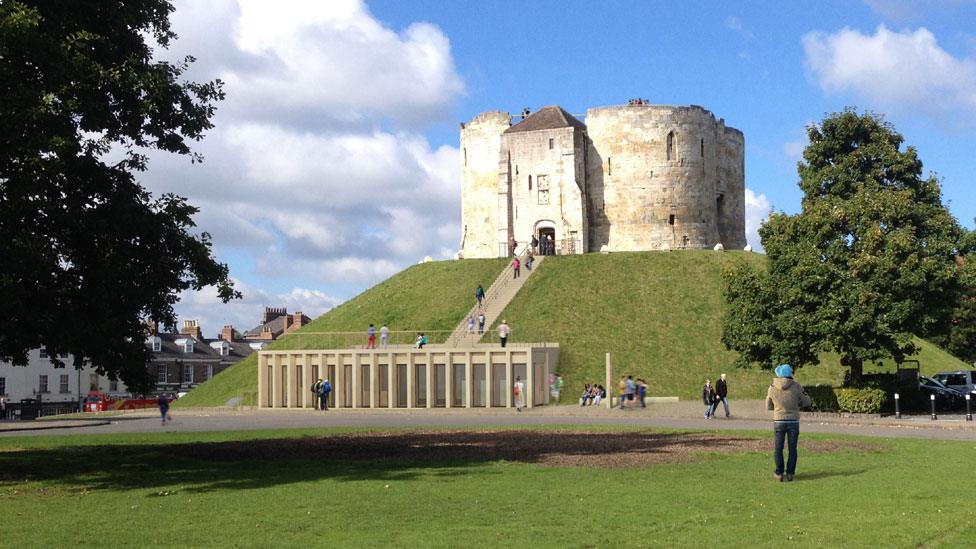
- Published26 January 2014
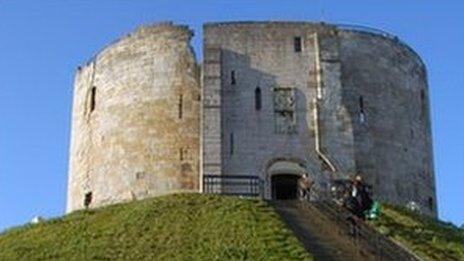
- Published5 November 2012
